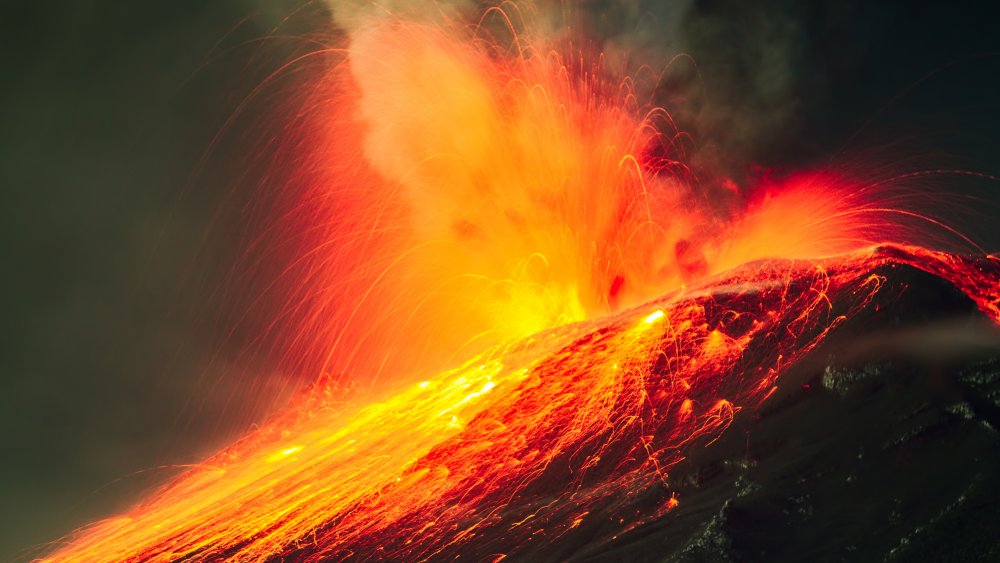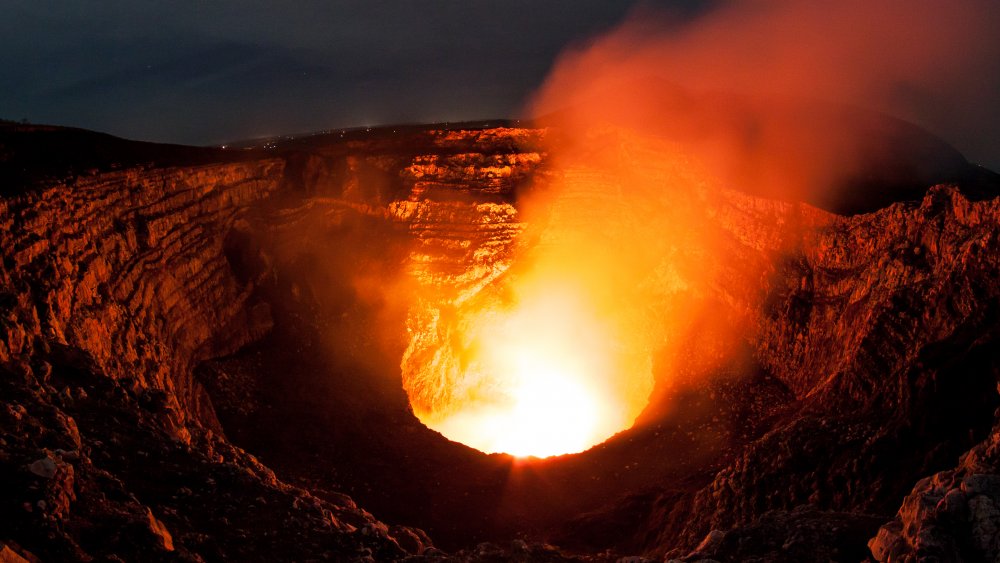This Is Why Volcanoes Really Erupt
There's something mystical about volcanoes. While science can offers reasonable explanation about why eruptions occur, plenty of rituals exist to appease the Gods to stop the destruction. American Scientist, for instance, wrote about the Merapi volcano in Indonesia that flared in May 2006, leeching lava from its dome. When warned by volcanologists about the red-hot situation, the local village conducted a ceremony placing incense, fruit and rice in boats and sailing them down the river instead of fleeing.
Myth and legend surround volcanoes as scientist study the phenomenon and try to understand it. Eruptions occur because super-hot molten rocks called magma rise through the earth's crust and surface. "The lower density of the magma relative to the surrounding rock cause it to rise (like air bubbles in syrup)," according to Oregon State University's Volcano World. As magma rises, bubbles form from the dissolved gas. These wield pressure, forcing magma upward. "It's sort of like the bubbles of gas in a bottle of soda," explains the website. "Before you open the soda you don't see many bubbles because the pressure in the bottle keeps the gas dissolved in the soda. When you open the bottle the pressure is released and the gas bubbles leave the soda." So if you shook the bottle, the soda would explode, releasing all those gas bubbles.
Magma, an important ingredient to an eruption, is made as the earth's mantle melts. How does that happen?
Volcano explosions: fact and fiction
When tectonic plates move or pull away, magma, which is lighter than rock, moves upward. That's when the bubbles appear. Magma may flow through cracks in the earth's surface, and that's when it becomes lava, said the BBC. As pressure increases, eruptions can occur both on land and in the water. Almost three-quarters of all eruptions occur underwater, said Ocean Explorer. These help shape the seas and can even form land masses — some, like the Hawaiian Islands, can take thousands of years to create.
So far in 2020, there have been about 62 eruptions from 60 separate volcanoes, according to the National Museum of Natural History Global Volcanism Program. Eighteen were new eruptions. While some outpouring of lava can happen quickly, most volcanoes take 10 years before finishing their outburst, with some lasting for hundreds of years, pointed out Scholastic. An average volcano erupts every 100 years. Some are more active than others — Masaya in Nicaragua erupts about every 25 years.
What should you do if you're near a volcano and it starts steaming? Movies always show the hero dramatically outrunning the lava, and while that's a possibility, the best way to save yourself is to avoid the situation entirely. "This means that when local authorities tell you it's time to evacuate because the volcano is showing signs of eruption, then get out safely," advised Discover magazine. So forego those ceremonial sacrifices of shells, chickens, or whatever. Get in your car and drive.

